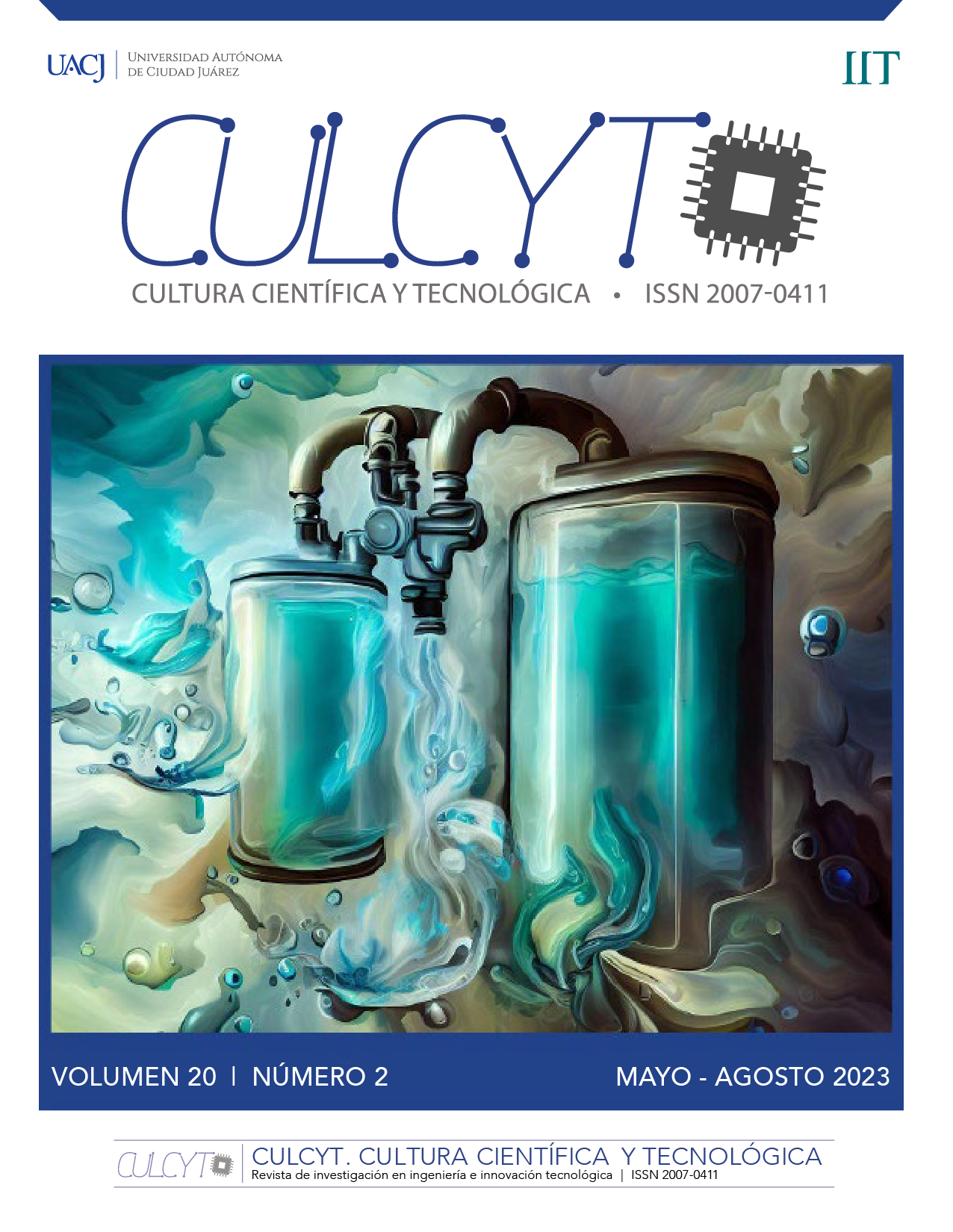Incentives as an Instrument to Improve the Productivity and Efficiency of a Water Purification Microenterprise
DOI:
https://doi.org/10.20983/culcyt.2023.2.2.1Abstract
This work arises from the need for a water purification microenterprise to increase its productivity and make its production process more efficient since it does not meet customer demand, as well as to motivate its workers to meet their goals. We applied and adapted a methodology already proven in other case studies where mass production is carried out. To achieve the production goal, a process analysis was carried out employing a breakdown of operations, as well as an analysis of manufacturing operations through a time and motion study with a stopwatch, line balancing, and the application of differential wage rates. By adapting and applying the methodology, productivity improved from 1.67 to 1.51 $/unit, efficiency went from 67.54 to 93.80 %, and workers achieved a minimum wage increase of 18.73% and a maximum of 31.93 % depending on the workstation. In addition, with the new work organization, it was possible to meet customer demand.
Downloads
References
B. Qi y J. Yao, “A Study of the Moderating Mediation Model of Pay Equity on Job Performance”, Int. J. Membr. Sci. Technol., vol. 10, no. 3, pp. 542-551, jul. 2023, doi: 10.15379/ijmst.v10i3.1571.
P. B. Clark y J. Q. Wilson, “Incentive Systems: A Theory of Organizations”, Adm Sci Q, vol. 6, no. 2, pp. 129-166, sept. 1961, doi: 10.2307/2390752.
C. Mario, “Comparative Incentive Systems”, en Global Encyclopedia of Public Administration, Public Policy, and Governance, A. Farazmand, ed., Springer, Cham, 2019, pp. 1-5, doi: 10.1007/978-3-319-31816-5_3706-1.
G. P. Baker, M. C. Jensen y K. J. Murphy, “Compensation and Incentives: Practice vs. Theory”, J Finance, vol. 43, mo. 3, pp. 593-616, jul. 1988, doi: 10.1111/J.1540-6261.1988.TB04593.X.
R. C. Carreón-Romero, A. Ramírez-Torres, L. Carreón-Romero, y M. E. Carreón-Romero, “Incentivos para aumentar la eficiencia de una línea de producción textil”, Coloq. Investigación Multidisciplinaria, vol. 7, no. 1, pp. 1029-1035, 2019. Accedido: jun. 12, 2023. [En línea]. Disponible en: http://cim.orizaba.tecnm.mx/Journals/Journal_CIM_2019.pdf
S. Balamurali, R. Göb, y C.-H. Jun, “Attributes Sampling Schemes in International Standards”, en Wiley StatsRef: Statistics Reference Online, 2014, doi: 10.1002/9781118445112.stat04120.
B. Niebel y A. Freivalds, Ingeniería industrial, métodos, estándares y diseño del trabajo, 12.ª ed. México, D.F.: McGraw-Hill, 2009.
R. García-Criollo, Estudio del trabajo, Ingeniería de métodos y medición del trabajo, 2.ª ed. México: McGraw-Hill, 2005.
H. Gutiérrez-Pulido, Calidad total y productividad, 3.ª ed. México: McGraw-Hill, 2010.
M. T. Noriega, “Los incentivos salariales”, Ingeniería Industrial, no. 012, pp. 30-39, dic. 1994, doi: 10.26439/ing.ind1994.n012.2799.
J. Sauermann, “Performance measures and worker productivity”, IZA World of Labor, 1-12, abr. 2023, doi: 10.15185/izawol.260.v2.
M. Masniar, U. R. Marasabessy, E. Astrides, A. Ahistasari, M. A. N. Wahyudien, y M. M. Rachmadhani, “Analysis of Work Measurement Using the Stopwatch Time Study Method at PTEA”, J. Ind. Eng. Manag., vol. 2, no. 1, pp. 23-31, 2023, doi: 10.56882/jisem.v2i1.14.
R. Chase, R. Jacobs y N. Aquilano, Administración de operaciones. México: McGraw-Hill, 2009.
C. Cuevas, Y. Á. González, M. del C. Torres y M. G. Valladares, “Importancia de un estudio de tiempos y movimientos”, Inventio, vol. 16, no. 39, pp. 1-5, 2020, doi: 10.30973/inventio/2020.16.39/7.
T. O. Kowang, L. K. Yew, y O. C. Hee, “Takt Time Analysis in Lean Six Sigma: From Conventional to Integration”, Int J Eng Adv Technol, vol. 9, no. 2, pp. 4076-4080, dic. 2019, doi: 10.35940/ijeat.B4949.129219.
Downloads
Published
How to Cite
Issue
Section
License
Copyright (c) 2023 Roberto Carlos Carreón Romero, Alfredo Ramírez Torres

This work is licensed under a Creative Commons Attribution-NonCommercial 4.0 International License.
Todos los contenidos de CULCYT se distribuyen bajo una licencia de uso y distribución “Creative Commons Reconocimiento-No Comercial 4.0 Internacional” (CC-BY-NC). Puede consultar desde aquí la versión informativa de la licencia.
Los autores/as que soliciten publicar en esta revista, aceptan los términos siguientes: a) los/las autores/as conservarán sus derechos de autor y garantizarán a la revista el derecho de primera publicación de su obra; y b) se permite y recomienda a los/las autores/as agregar enlaces de sus artículos en CULCYT en la página web de su institución o en la personal, debido a que ello puede generar intercambios interesantes y aumentar las citas de su obra publicada.



